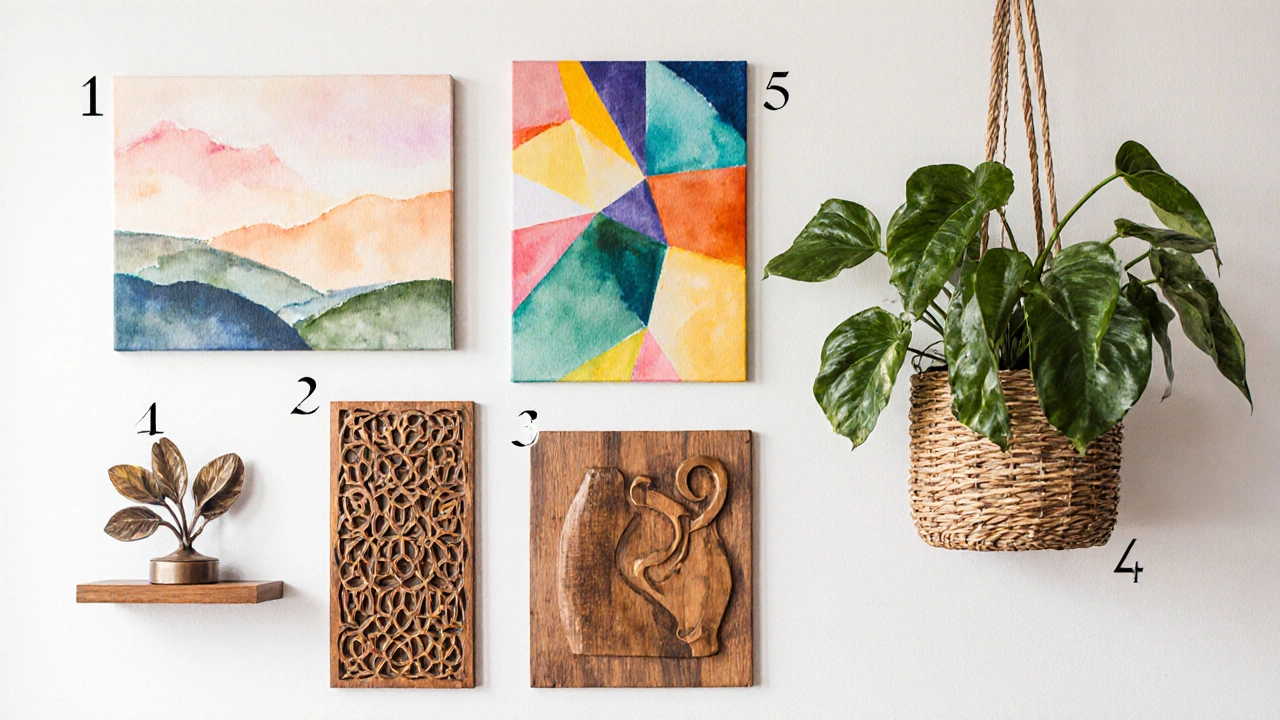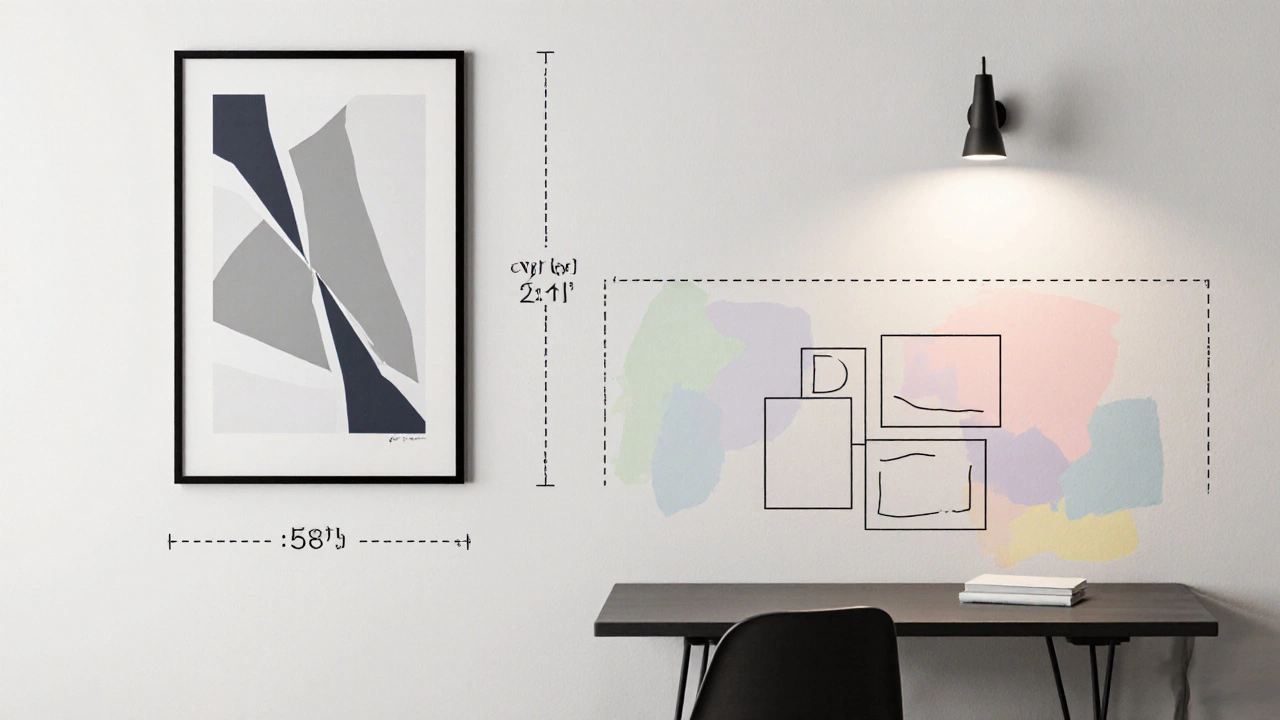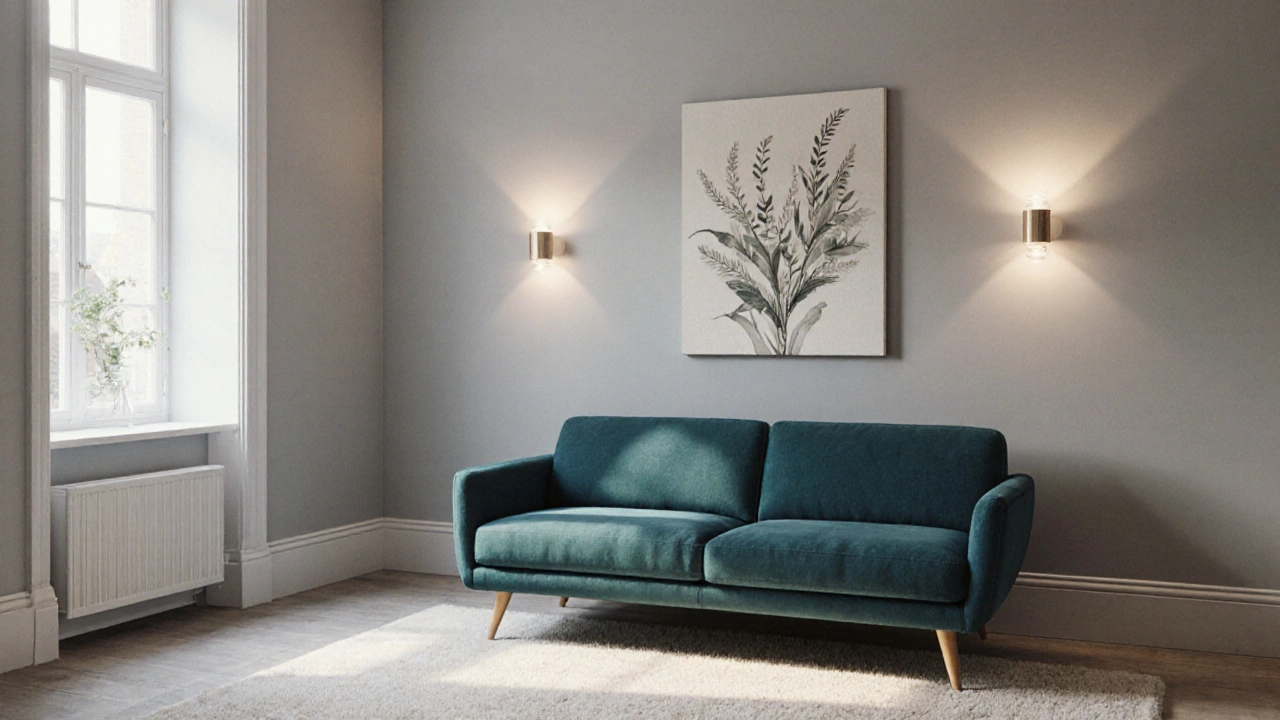Filler Art Size Calculator
filler art is a type of decorative piece used primarily to fill empty wall or floor space, adding visual interest without dominating the room. It’s the silent partner that helps a room feel complete, especially when you have large blank surfaces that scream for something to look at.
Why Filler Art Matters in Interior Design
When you walk into a room with a stark wall, your eyes naturally search for something to latch onto. Interior design the art and science of planning indoor spaces relies on balance, rhythm, and scale. Filler art provides the missing rhythm, tying together furniture, color palettes, and architectural features. It can soften harsh edges, echo a color scheme, or simply make a space feel lived‑in.
- Creates visual continuity - Repeating shapes or colors across a room helps the eye move smoothly.
- Softens large surfaces - Blank walls can feel oppressive; a well‑chosen piece adds warmth.
- Boosts perceived value - Even inexpensive prints can make a room feel curated.
Common Types of Filler Art
Not all filler pieces look the same. Here are the most popular formats you’ll encounter:
- Canvas prints high‑quality reproductions printed on stretched canvas - Affordable, lightweight, and easy to swap out.
- Murals large‑scale paintings or digital wallpapers covering entire walls - Perfect for accent walls in living rooms or home offices.
- Decorative panels wood, metal, or acrylic panels with patterns or textures - Add depth and tactile interest.
- Sculptural objects small statues or abstract forms placed on shelves or mantels - Bring a three‑dimensional element to flat walls.
- Living fillers large potted plants or hanging greenery used as art - Double as décor and air purifiers.

How to Choose the Right Filler Art for Your Space
Picking a piece isn’t random; follow these practical criteria:
- Size matters. Measure the wall and leave at least 8‑12 inches of breathing room on each side.
- Color harmony. Pull a hue from your sofa, rug, or curtains to create a subtle link.
- Style alignment. If your room is mid‑century modern, choose clean lines; for boho, look for eclectic patterns.
- Purpose. Decide if you want the art to be purely decorative (visual filler art that primarily adds visual balance) or to convey a message or memory.
Remember, filler art should complement, not compete with your main furniture or statement pieces.
Placement Tips: Making Filler Art Work
Even the right piece can fall flat if hung incorrectly. Here’s a quick placement cheat‑sheet:
- Eye‑level rule: Hang the center of the artwork at about 57‑60 inches from the floor - the average eye height.
- Group smaller pieces in a 3‑by‑3 grid or an odd‑numbered cluster for a balanced look.
- Use space planning the process of arranging furniture and décor to optimize flow to ensure the filler art doesn’t block pathways or windows.
- Consider lighting - a soft wall‑sconce can make canvas prints pop without glare.

Common Pitfalls and Pro Tips
Even seasoned homeowners slip up. Avoid these mistakes:
- Oversized filler. A tiny print on a huge wall looks lost; scale up accordingly.
- Clashing colors. If your sofa is teal, a bright orange filler might clash unless it’s part of a broader palette.
- Neglecting texture. Mixing glossy prints with matte panels adds depth.
- Forgetting the room’s function. In a home office, low‑key abstract art works better than bold, distracting patterns.
Pro tip: Rotate filler art seasonally. A light landscape works great in spring, while a warm abstract can cozy up a room for winter.
Filler Art vs. Statement Art vs. Functional Art
| Aspect | Filler Art | Statement Art | Functional Art |
|---|---|---|---|
| Purpose | Fill empty space, add subtle visual interest | Serve as the room’s focal point | Combine aesthetics with practical use (e.g., sculptural lighting) |
| Scale | Medium to small; respects surrounding elements | Large or bold; dominates the view | Varies; often sized for utility |
| Cost | Generally lower; mass‑produced prints or panels | Higher; original works or limited editions | Mid‑range; functional pieces can be handcrafted |
| Installation | Easy, often self‑adhesive or lightweight | May require professional hanging or mounting | Integrated into furniture or fixtures |
| Impact on Mood | Subtle, background enhancement | Strong, emotional statement | Blend of form and function influencing daily routines |
Frequently Asked Questions
What size of filler art should I choose for a large wall?
Aim for a piece that covers roughly 30‑40% of the wall’s width and height, leaving equal margins on all sides. This prevents the artwork from feeling dwarfed.
Can filler art be three‑dimensional?
Yes. Small sculptures, decorative plates, or even textured wall panels work as three‑dimensional filler art, adding depth and shadow.
Is it okay to mix multiple filler art styles in one room?
Mixing can create a curated look if you tie them together with a common color or material. Otherwise, stick to one style to avoid visual chaos.
How often should I rotate filler art?
Every 6‑12 months works well. Seasonal changes keep the space fresh without a full redesign.
Do I need professional hanging for filler art?
Most filler pieces are lightweight and come with hanging hardware. Only very large canvases or murals may need a professional.
